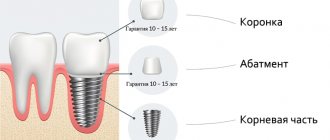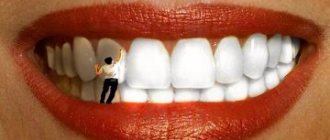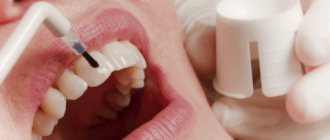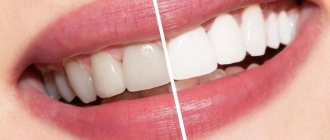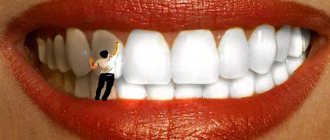Julia looked at herself... and decided that she was not beautiful enough. I started to correct the situation with my teeth.
During quarantine, we did live broadcasts with different cool speakers - and I got involved. I loved this format.
But - surprise - because of these broadcasts I encountered new old problems. Again, I didn’t like the way I looked :) In this case, I looked on camera. I reviewed my “film” wardrobe (if you’re in black or white, the camera is “off-putting”, you need something neutral), I reviewed my makeup (my skin is too light, and the camera “offsets” again), now I’m making my face tone warmer, highlighting eyes more intense) and found points in the apartment where the lighting makes me happy.
But there was a problem that you couldn’t fix on your own. For example, yellowish teeth -).
I decided to take this very problem to dentist Gleb Pekli at his clinic Insmile Dental Lounge, which we have already written about and who is a doc, a pro and a specialist in this matter. At the end of June I went for a consultation. It wasn’t scary - it seems like I already know everything about whitening, I did it seven years ago. Well, almost not scary :)
This is what the teeth looked like when I showed Gleb:
Teeth before whitening
It seems not critical, but I remember how much I liked the color of my teeth seven years ago, just after that Philips Zoom whitening. I wanted to return that feeling.
General picture "before":
At the consultation, Gleb told me that I have a gray-yellow type of enamel. (There are three of them in total - white, a very rare white-blue and gray-yellow. Gray-yellow is characteristic of approximately 70% of the inhabitants of Russia). With this type, whitening with Philips Zoom alone will not be enough. To make your teeth as white as possible, after the procedure you need to use the Opalescenes home system. It is, of course, not as powerful as Zoom, but it works gradually, day after day.
What is in-office teeth whitening
In-office teeth whitening is an aesthetic dental procedure that takes place in a doctor’s office under his full supervision. An important advantage of this method over home whitening is absolute safety, fast and effective results. You can get the desired result even in one procedure, while teeth whitening at home will take several weeks. Anesthesia is not required, as there is no pain during the process.
Some tips
Before you make a white background in a photo, you need to capture the frame correctly. Our simple tips will help you make it perfect:
- Look for more white surfaces: wall, table top, carpet, refrigerator, cabinet door, window and more.
- Try to stick to minimalism. The fewer objects there are, the more aesthetically pleasing the photo will look.
- Take a close look at the details that will be shown in the photo. They should successfully resonate with each other.
Types of in-office whitening
Photobleaching
A gel is applied to the teeth, which is activated by light from a halogen or ultraviolet lamp. The gel contains peroxide, which decomposes into water and oxygen. It is thanks to the effect of oxygen that dark pigments from tooth tissue are discolored, creating a whitening effect.
Pros:
- high efficiency;
- quickly achieving the desired result;
- safety;
- painlessness.
Flaws:
- relatively high cost.
Chemical bleaching
The essence of the procedure is to apply two mixed gels to the surface of the teeth. As a result, a chemical reaction occurs that leads to discoloration of dark pigment spots in the dental tissues. The concentration of active substances is higher than with other types of whitening, which can cause a temporary increase in tooth sensitivity.
Pros:
- safety;
- high whitening speed.
Minuses:
- dental hypersensitivity is present for 1-2 days;
- the whiteness effect is not as pronounced as with photobleaching.
The Saint-Dent Clinic in Moscow provides all types of dental treatment. American and European equipment is used in their work; doctors have extensive experience and regularly improve their knowledge and skills through courses in the best foreign dental centers. You can find the clinic's contacts here. The section with current prices is posted here
How does photo teeth whitening work?
One photo-bleaching session takes about an hour. First, the dentist determines the color of the patient's teeth using a standardized VITA scale. He then places a buccal retractor, which allows for better access to the dental arches. A special protective composition is applied to the gums, and a whitening gel is applied to the teeth. Then both dental arches are irradiated with a lamp for 15 to 30 minutes. After this, the “spent” gel is washed off, and, if necessary, a new layer is applied to the enamel, and the procedure is repeated. If the patient is dissatisfied with the newly acquired color of the teeth or wants to enhance the result obtained, then he may be recommended to repeat the photo-whitening procedure or additionally use a home whitening system.
Advantages and disadvantages of the procedure
Advantages:
- achieving a good aesthetic result in just one session;
- with proper technological execution, the procedure is absolutely safe;
- within a week the patient will be able to return to their normal lifestyle.
Flaws:
- tooth sensitivity to hot and cold foods increases;
- there is a risk of thinning the enamel;
- the gums and mucous membrane of the tongue may become inflamed;
- in a few years the procedure will have to be repeated again.
Consolidate the result
The teeth whitening procedure is carried out at intervals from 6 months to 2 years. To reduce the number of sessions, you should take all preventive measures recommended by your dentist.
You can maintain the whiteness of your tooth enamel after completing the whitening procedure by:
- using high-quality and effective toothpastes that are designed to care for the entire oral cavity;
- removal of dental plaque in the clinic several times a year (preferably every 4 months);
- limited consumption of products that contain coloring pigments: strong tea, black coffee;
- quitting smoking cigars, cigarettes, hookah.
Indications and contraindications
Indications:
- dark or severely discolored teeth;
- partial or complete internal darkening of teeth;
- presence of fluorous spots;
- age-related changes in tooth color.
Contraindications:
- numerous carious cavities;
- the presence of an exposed neck of the tooth;
- cracks and chips on the enamel surface;
- increased abrasion of enamel;
- enamel erosion or its partial absence;
- periodontal disease;
- allergic reactions to one of the components included in the gel;
- oral diseases.
It is important to know. Restorative materials and crowns cannot be bleached, so after completion of the procedure it is necessary to re-do the restoration. It can be performed no earlier than 2 weeks after in-office whitening.
Photo whitening and tooth sensitivity
Increased tooth sensitivity may occur as a result of exposure to chemicals and high temperatures. The solution to this problem is proper preparation for photobleaching. Before the procedure, the dentist must conduct an examination of the oral cavity in order to identify the presence of chips and cracks, caries, gum disease and other factors that may be a contraindication to whitening and must first be eliminated. In addition, before photo-whitening, professional hygiene and remotherapy are recommended, as well as the use of special pastes that eliminate hypersensitive teeth.
The essence of the in-office whitening procedure
The dentist performs the following actions:
- applies protection to the oral mucosa;
- applies the whitening agent to the frontal area of the teeth;
- when photobleaching, I expose the gel to light from a halogen or ultraviolet lamp;
- after a certain time (on average 15 minutes), the drug is washed off with plenty of water;
- At the end of the procedure, the teeth are coated with a special gel that reduces their sensitivity.
Good to know. Along with the darkened areas of the teeth, useful minerals are removed. The lack of substances can be compensated for by remineralization of teeth.
Reviews about the procedure
Below are some reviews. If you have something to say, leave your feedback in the comments below the article, it will be useful to our readers.
Marina, Moscow.
Teeth are my sore subject. They are naturally yellowish, plus I simply cannot imagine myself without coffee. I was thinking about getting veneers or whitening my teeth. In the end, I chose the second one and did not regret it. It’s been 3 months since I became the owner of a Hollywood smile! Despite my enormous fear of dentists, I endured the procedure calmly - I just lay there while the lamp did its job.
Rinata, Novosibirsk.
My daughter had her teeth photobleached - she wanted to look 100% at her prom. My teeth certainly became whiter, but terrible sensitivity of the enamel appeared. For the first week after going to the clinic, my daughter could not eat or drink anything without wincing in pain. She said that she liked the effect, but she was no longer ready to make such sacrifices for the sake of beauty. Now maintains the result with professional cleaning.
How long does the procedure take?
While the patient is in the dental chair, the doctor constantly monitors his condition and the color of the teeth being whitened. One session consists of 1-3 whitening procedures of 15 minutes each. If during the session the patient experiences any unpleasant sensations, he must notify the specialist about this. If necessary, the procedure can be repeated after a few days.
How much can you whiten your teeth with this type of whitening?
Changes before and after in-office whitening will be noticeable immediately. After chemical whitening, teeth become lighter by 6-8 tones, and after photo-whitening – by 8-12 tones.
Advantages and disadvantages
The procedure has gained worldwide fame precisely thanks to its extensive list of advantages :
- Quick results - just one hour-long session and teeth become 10-12 shades lighter.
- Durability – the result lasts from 1 to 3 years.
- safety – compared to older enamel lightening methods.
Keep in mind! But it was not without its drawbacks:
- Temporarily makes teeth more sensitive - this causes discomfort during meals.
- Does not lighten fillings, veneers, dentures and crowns - they will need to be changed after whitening.
- It is quite expensive - which for many is a decisive factor for refusal.
How long does the effect last and how often should the procedure be done?
The resulting effect lasts for 2-7 years. The duration of the result depends on the type of whitening chosen, the individual characteristics of the person and his lifestyle. Teeth whitening can be repeated at least after 1-2 years.
To ensure that the whitening effect lasts as long as possible, you must follow these recommendations:
- maintain oral hygiene;
- to refuse from bad habits;
- limit the consumption of coloring foods and drinks (you should completely avoid them in the first 7 days);
- Visit a hygienist every six months for professional oral cleaning.
Painter-plasterer
The third editor that will help you make a white background in a photo is called Snapseed . The application is free and available in the official AppStore and Google Play .
Instructions on how to make a white background in a photo:
- Open the photo in the program.
- Next follow: Tools - Brush - Saturation .
- Set Saturation to -5 or -10. Swipe your finger across the screen to whiten areas of the photo.
- Next follow: Tools - Brush - Exposure .
- Set Exposure to -0.3 and also slide your finger across the screen.
- Play around with the values until the picture is perfect.
The result of background whitening in Snapseed .
How much does a snow-white smile cost?
How much will laser whitening cost? The answer to this question directly depends on the type of equipment used, the pricing policy of the clinic and the region of treatment. On average, the price of one session in Moscow ranges from 20 to 30 thousand rubles. The cost includes treatment of only those teeth that fall within the smile zone.
Overall, this is a safe and effective method that allows you to quickly become the owner of a snow-white Hollywood smile. It is only important to take a responsible approach to finding a good clinic and an experienced specialist, diagnose the condition of hard tissues in advance, and identify possible contraindications and the root cause of tooth darkening.
- Burgonsky V.G. Lasers in dentistry, 2009.
How safe is the technique?
The use of modern technologies and lightening compounds in safe concentrations made the procedure harmless. It is important to undergo appropriate training, identify possible contraindications, and assess the current condition of the enamel. In general, if the doctor follows the technology and uses high-quality equipment, any risks of complications remain at a negligibly low level.
Here are some more compelling reasons for the safety of laser technology:
- unlike a light lamp, a laser beam provides a targeted and impulsive effect, which significantly reduces the likelihood of a thermal burn and makes the procedure as comfortable as possible for the patient,
- the lightening composition used penetrates deep enough into the enamel layer and at the same time acts quickly, which protects the surface of the teeth from excessive drying,
- The laser device has various setting modes, which allows you to control the intensity of the effect. The set also includes various attachments, the choice of which depends on the current state of the enamel and the individual characteristics of its structure,
- After the session, patients also experience hyperesthesia, but in the case of a laser, the unpleasant sensations are much less intense, as after other methods of in-office whitening.
The photo shows teeth before and after the whitening procedure.
The technology involves the use of a gel with a fairly powerful active ingredient. Therefore, if there are problems with the enamel, it is better to refrain from the procedure. Keep in mind that some pathological phenomena can only be identified by a professional dentist, so before proceeding with bleaching, the doctor should conduct a visual examination and assess how healthy the tissue is and ready for bleaching.
What are the advantages?
This technique is effective and safe if the procedure is performed by an experienced specialist in a dental office. It is characterized by its pros and cons. Among the undeniable advantages, experts in the field of aesthetic dentistry highlight the following points:
- the duration of one procedure usually takes no more than half an hour, while light whitening lasts about 1-2 hours,
- high efficiency - as a rule, 2-3 sessions are enough to get a noticeable, lasting result. Moreover, the effect can last up to 2 years, of course, with proper care of your smile and respect for it,
- safety - today, within the framework of this technique, harmless compositions based on low concentration hydrogen peroxide are used. Due to the fact that the procedure is carried out quickly, it is possible to reduce the intensity of the aggressive effect of the component on living hard tissues,
- Additional tissue disinfection occurs, which ensures the prevention of the development of carious processes and the spread of other infections in the oral cavity.
Safe components are used during the procedure.
The laser device is based on the concentration of a small light source. When activated, the temperature does not increase, so the tissues do not heat up, and the force of the effect only increases. Due to the optimal flickering frequency of the laser beams, the risk of enamel overheating is reduced to virtually zero1.
